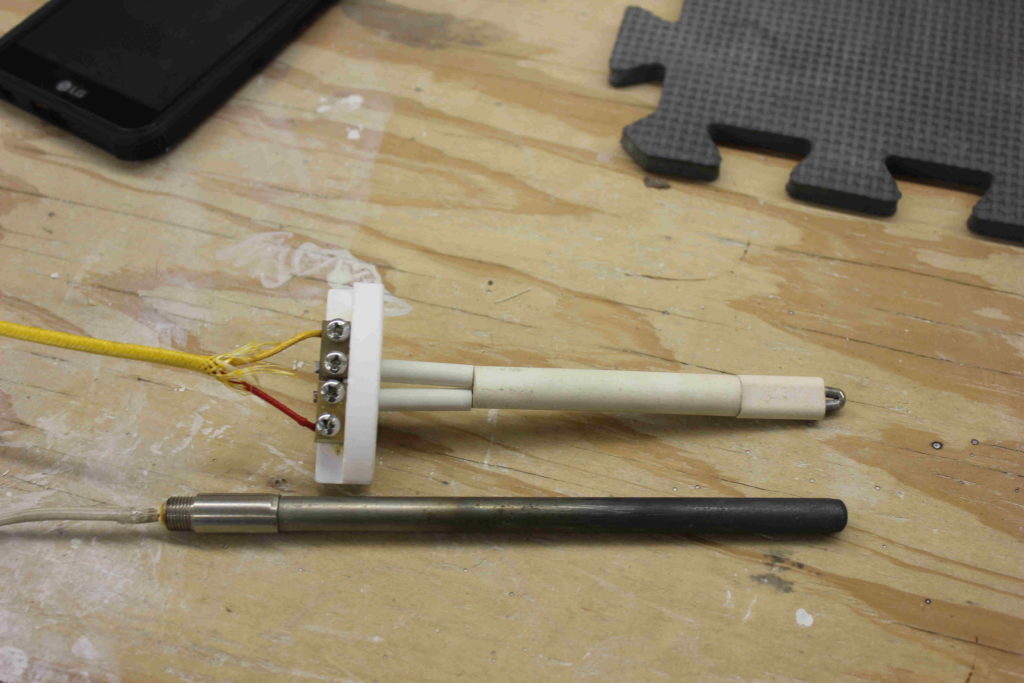
An electric kiln is a wonderful thing, but at times it can be frustrating. On a recent firing, my controller indicated a firing error, and I had to find the cause. there were three possible culprits
- the relays. these are automated switches that turn the elements in the kiln on and off.
- the elements. these will wear out over time. eventually they fail to heat to the needed temperature and will cause the kiln to misfire.
- the thermocouple. this is the kilns thermometer. the circuitry in the electronic controller looks at the temp given by the thermocouple to see if the firing is on schedule.
One of the more important skills you can have is problem solving. With careful note-taking and observation, you can often frequently narrow down the list of causes. I had noted earlier in the firing that the temperature seemed to be jumping around strangely, not rising when the elements were humming and seeming to cool much faster than the natural tendency of the kiln at that temperature range. This led me to suspect the thermocouple had worn out to the point where it was not sending reliable information to the kiln’s controller.
The next thing I did was look up the error code in the kiln manual, which listed the three above culprits. I was confident that the thrermocouple was the problem, but I wanted to be as sure as possible. I performed what the kiln manual called the full power test,looking directly at the elements as they fired. This is what i saw and concluded:
- the relays were functional beasuse all section of the elements were lit up
- the elements were not disconnected. while they were somewhat worn, they did not look worn enough to be the source of teh problem
with both my notes and the results of this test, I felt confident that the problem could be solved by replacing the thermocouple. After that was done, I loaded bisque ware and hoped for the best. The kiln, with the new thermocuple in place, fired the work up to temperature and it seems i have my kiln back in working order.
summery:
Always be sure to take notes of your firings. records can point the way to the source of a problem if things go wrong. record at least the cone, firing time, and date of your firings. Try to get an intuitive understanding of what the kiln sounds like when it is firing so you can better guide your guesses to the true source of the problem. try to devise an expriment that can confirm or deny potential sources of a problem. Don’t be afraid to talk to the manufacturer to get their insight to what the potential source of the problem might be.
